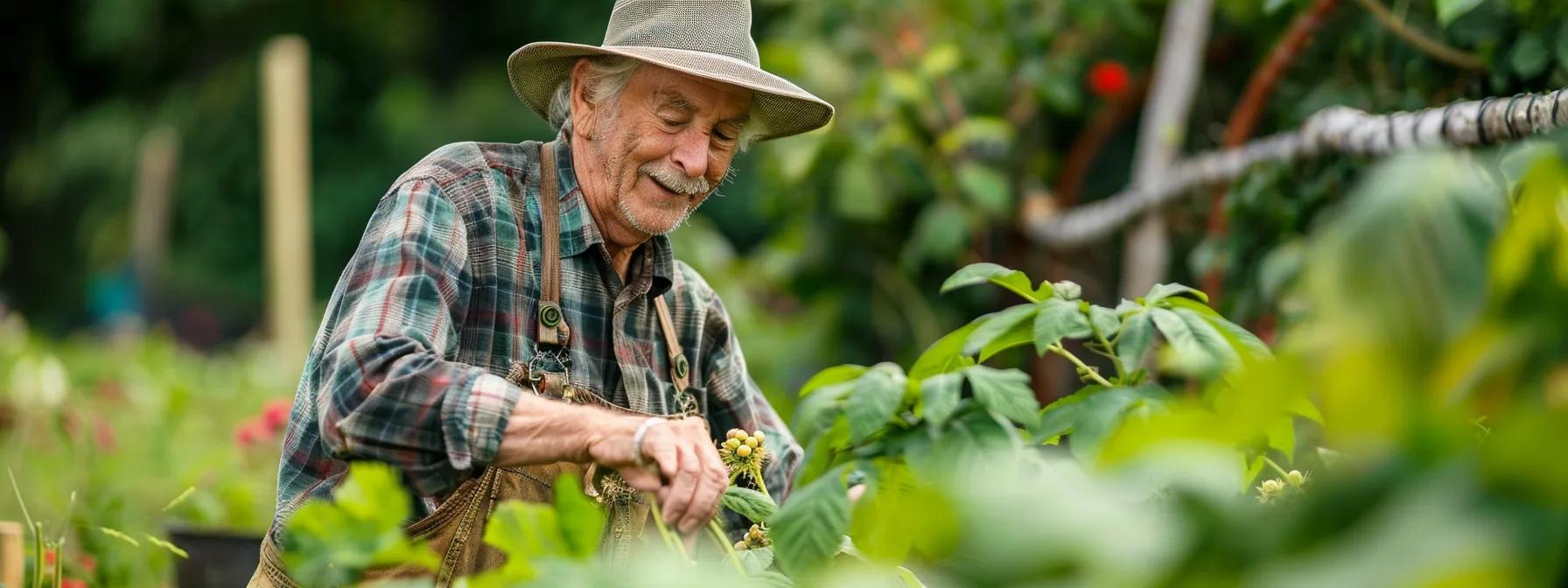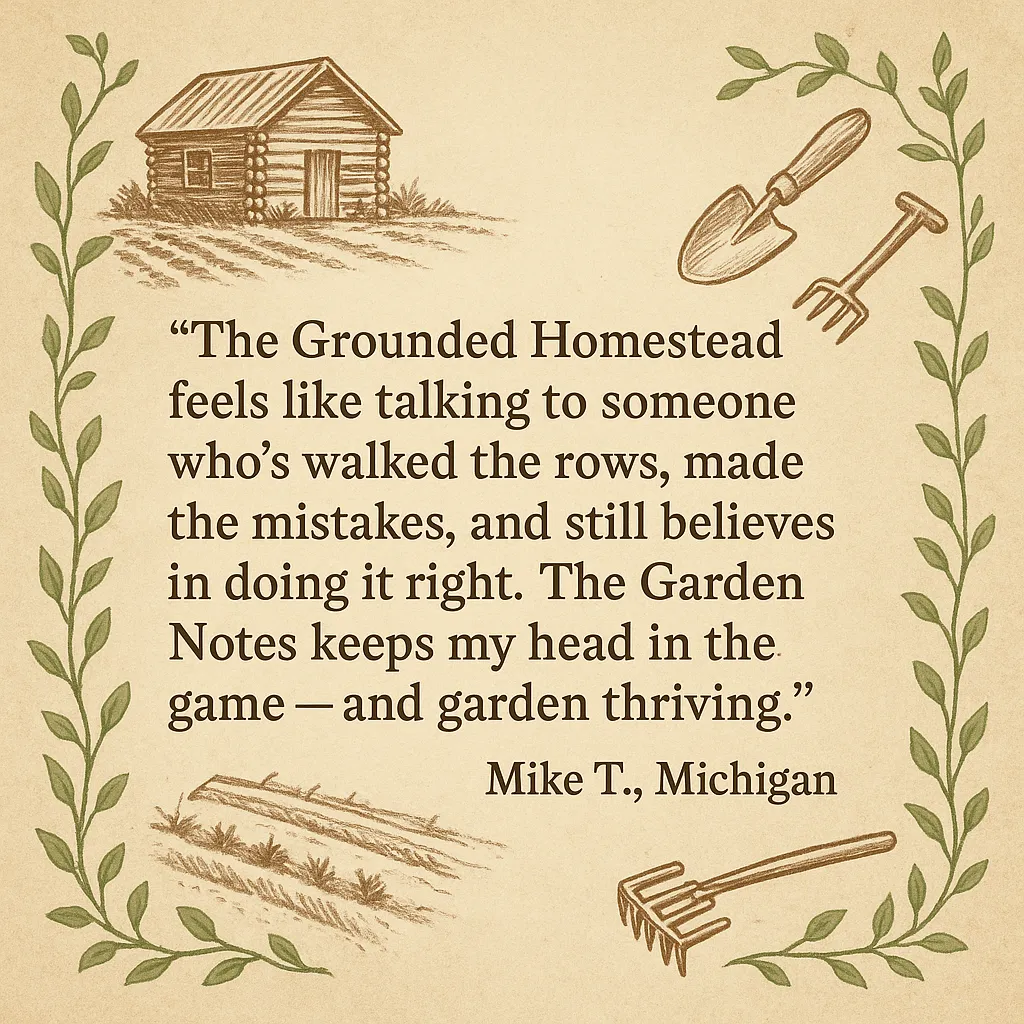
Build a Raspberry Trellis That Lasts: Sturdy DIY Designs for Any Backyard
Build a Raspberry Trellis That Lasts: Sturdy DIY Designs for Any Backyard
By The Grounded Homestead
The Year My Raspberries Hit the Dirt
I’ll never forget my first raspberry patch. I planted it in good soil, mulched it thick, and watched with pride as the canes shot up fast and full. But by midsummer, the weight of the fruit and the heat of the sun worked against me. The whole thing slumped sideways, half the canes collapsed into the walkway. Ripe fruit tangled in the dirt. It was a mess.
That was the year I learned a lesson Grandma already knew: you can’t just plant raspberries and hope for the best. They need structure. Support. Something to lean on so they can give you their best in return.
Let’s make sure you don’t learn that lesson the hard way.
Why Raspberries Need Support
Raspberry canes may look sturdy, but come fruiting season, they get top-heavy fast. Without something to support them, they’ll lean, snap, or sprawl across the ground. And that causes more problems than just ugly rows.
A good trellis:
Prevents cane breakage
Improves airflow, reducing fungal disease
Increases sun exposure, which sweetens the berries
Makes pruning, harvesting, and watering easier
Keeps your beds walkable, clean, and productive
As Grandma used to say, “Strong fences make sweet fruit.” And raspberries are no exception.
When to Install Your Trellis
The best time to install a trellis is before the canes need it. That’s usually:
Late fall, after leaf drop but before the ground freezes
Early spring, before new growth begins
Can you add one mid-season? Sure—but be careful not to crush your existing canes. Tie gently and skip anything that requires post-driving at that stage.
Choose a Trellis That Fits Your Space (and Style)
There’s no one-size-fits-all approach. Below are three time-tested options that work in real backyards, from rural rows to small raised beds.
Design 1: T-Post and Wire Trellis
Best for: Long rows, tough weather, no-frills function
Materials
6–8 ft galvanized T-posts
12–14 gauge galvanized wire
Post driver
Wire tensioner (optional)
Layout
Posts every 8–10 feet
Two or three horizontal wire lines at 3 ft, 4.5 ft, and 5 ft high
Train canes between wires or loosely tie to them
Primocane Tip
Fall-bearing raspberries (primocanes) only need support up to 3–4 ft. You can skip the top wire.
Floricane Tip
Summer-bearing varieties grow taller and benefit from all three tiers.
Pros
Cheap
Weatherproof
Built to last 8–10+ years
Cons
Looks industrial
Harder to blend into a home garden
Maintenance
Retighten wires each spring
Check for rust every few years
Replace snapped lines promptly
Design 2: Wooden H-Frame or V-Frame Trellis
Best for: Backyard gardens, visual appeal, customizable layout
Materials
4×4 pressure-treated posts
2×4 crossarms
Exterior wood screws
Twine or wire for cross-lacing
Optional wood stain or sealant
Layout (H-Frame)
Upright posts 8 ft apart
Crossarms screwed at 3 ft and 5 ft heights
Wire or twine runs along crossarms
Layout (V-Frame)
Two posts angled inward to form a “V”
Top connects with a cross beam
Wire runs diagonally between arms
Zone-Specific Notes
Northern zones: Set posts at least 18–24" deep to avoid frost heaving
Humid zones: Use rot-resistant wood and re-seal annually
Visual Touches
Stain with a natural cedar tone for rustic appeal
Add decorative post caps
Easily blends with flowers or herbs nearby
Pros
Visually pleasing
Fully customizable height/spacing
Blends well into gardens
Cons
More time-consuming to build
Wood may degrade over time
Maintenance
Check for rot annually
Restain or seal every 2 years
Replace crossarms every 5–7 years
Design 3: Minimalist String Line Trellis
Best for: Small gardens, seasonal patches, container setups
Materials
Bamboo stakes or rebar
Garden twine or soft cord
Tent stakes or ties
Layout
Stakes on each end of your bed or row
Run string lines at 2–4 ft heights
Use for light training, not heavy yields
Pros
Fast and cheap
Easy to set up and remove
Great for container raspberries
Cons
Not long-term
Won’t support mature canes or heavy fruit
Maintenance
Check monthly for sagging
Replace twine annually
Use biodegradable twine if composting spent canes
How to Tie Raspberries Without Damaging Canes
Whether you use wire, wood, or twine, tying the canes correctly matters.
What to use:
Soft garden twine
Velcro garden ties
Stretchy rubber loops
Avoid zip ties or wire twist ties—they’ll cut into the cane
How to tie:
Create a loose figure-8 between the wire and cane
Leave room for cane movement and swelling
Tie about halfway up the cane and again near the tip
Recheck every few weeks, especially after rain or heat
Tip: Remove all ties before winter if you’re cutting back primocanes or thinning floricanes.
Zone-Specific Considerations
Zone 4–5 (Northern climates)
Drive posts deeper or concrete-set to avoid frost heave
Use treated lumber or cedar
Watch for snow load—space wires wide enough for sag
Zone 6–7 (Mid-range climates)
Standard post depth is fine (16–18")
Treat wood against humidity
Best installation time is Feb–March
Zone 8–9 (Southern/hot climates)
Shade roots during install
Avoid untreated wood (rots quickly)
Add UV protectant to any plastic ties
Tools That Make the Job Easier
Post driver
Wire stretcher or turnbuckles
Cordless drill
Hand saw or circular saw
Post level
Tape measure
Work gloves
Maintenance Calendar
Season What to Do Spring Check and retighten wires; tie new canes Summer Adjust ties; prune damaged canes Fall Remove spent floricanes; inspect trellis Winter Repair or replace worn parts; prep for frost
Lead Magnet Download (Optional)
✅ [Grab the Free Trellis Plan PDF]
3 Raspberry Trellis Designs + Materials & Tool Checklist
Printable and perfect for your garden binder.
Faith-Aligned Reflection
When you train a raspberry to stand tall, what you’re really doing is giving it a foundation to bear good fruit. And that’s a pattern that shows up in more places than the garden.
“The best fruit always grows from something rooted, trained, and tended.”
Closing Thought
A raspberry patch with structure will feed you for years. And when you build that support with intention—from the soil up—it does more than hold up fruit. It anchors a rhythm. One that speaks to stewardship, preparation, and the quiet reward of something done right the first time.
Let’s build gardens that last. Let’s build a life that holds.


Facebook
Instagram
X
Youtube